Welcome to Sopot! You’ll discover a lively coastal gem nestled along Poland’s Baltic shores. If you’re seeking a travel guide filled with things to do near Gdańsk or the broader Tri-City area, Sopot deserves a prime spot on your list. Renowned for its sandy beaches, vibrant nightlife, and Europe’s longest wooden pier, this charming town captivates visitors of all ages. The sea breeze blends with the buzz of cafés and festivals. Thus, making Sopot an irresistible fusion of relaxation and adventure.
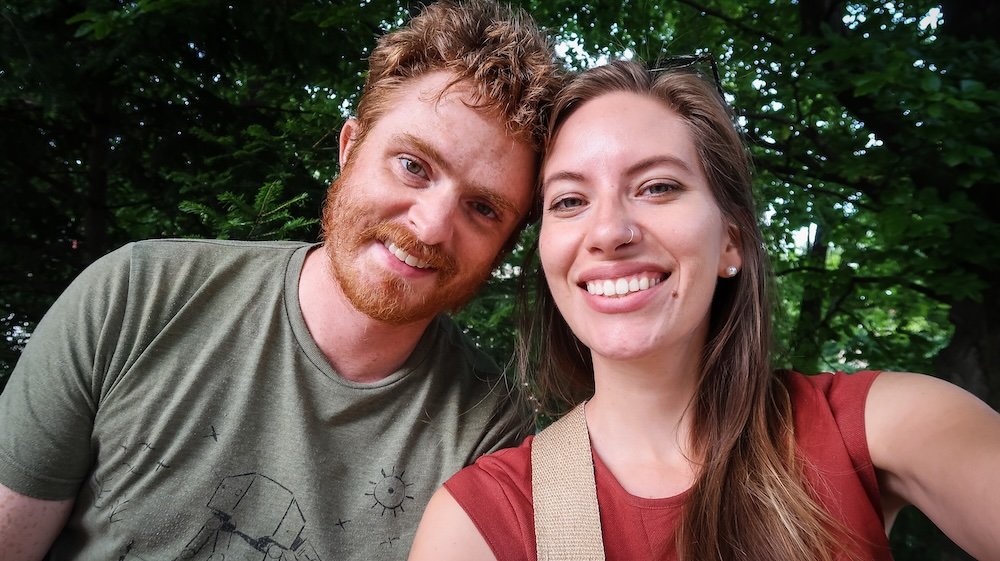
You’re looking for a destination that balances beachy fun with cultural intrigue. You want to roam a quaint town center, sample fresh Baltic fish, and maybe dip your toes into local nightlife. Or perhaps you crave an easy getaway from Gdańsk, with minimal travel fuss. Sopot meets each of these desires with coastal flair. Plus a dash of Polish hospitality.
Our Travel Video (Sopot) from Samuel and Audrey YouTube Channel (Hosted by Nomadic Samuel and That Backpacker)
Seaside Escape?
Planning a seaside escape can raise questions: how crowded are the beaches in peak season? Does Sopot stay active in cooler months? Is the nightlife too raucous if you’re traveling with kids? And what about local cuisine—will it appeal to your taste? This guide aims to soothe those concerns. We’ll guide you through Sopot’s highlights and helping you navigate peak tourist times, transport quirks, and lodging nuances.
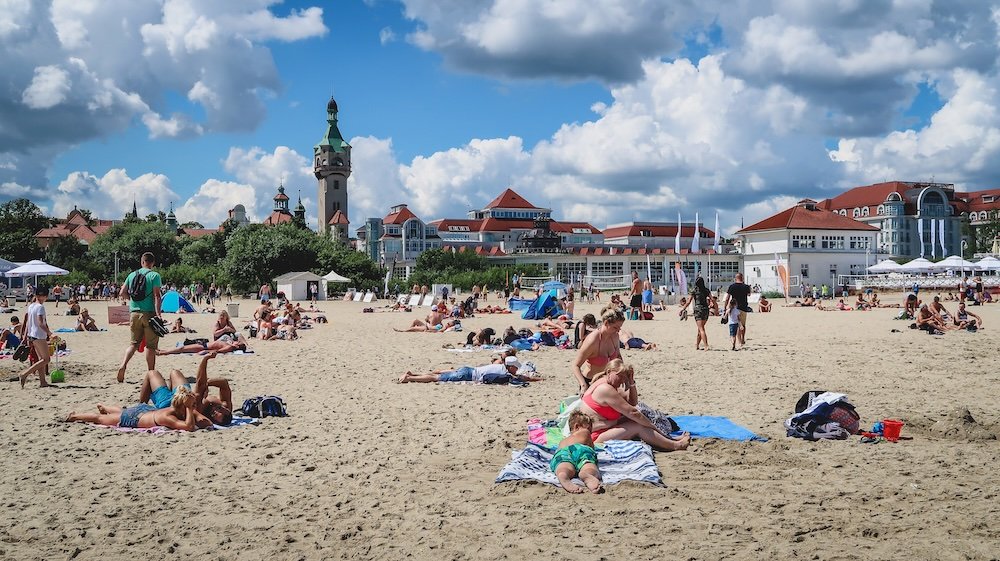
Sopot caters to all. Couples chase romantic sunsets on the pier, backpackers dig the beach parties, and culture buffs relish the art deco architecture. If any part of you loves the sea air, people-watching, and the chance to try new flavors, you’ll thrive in Sopot’s breezy environment.
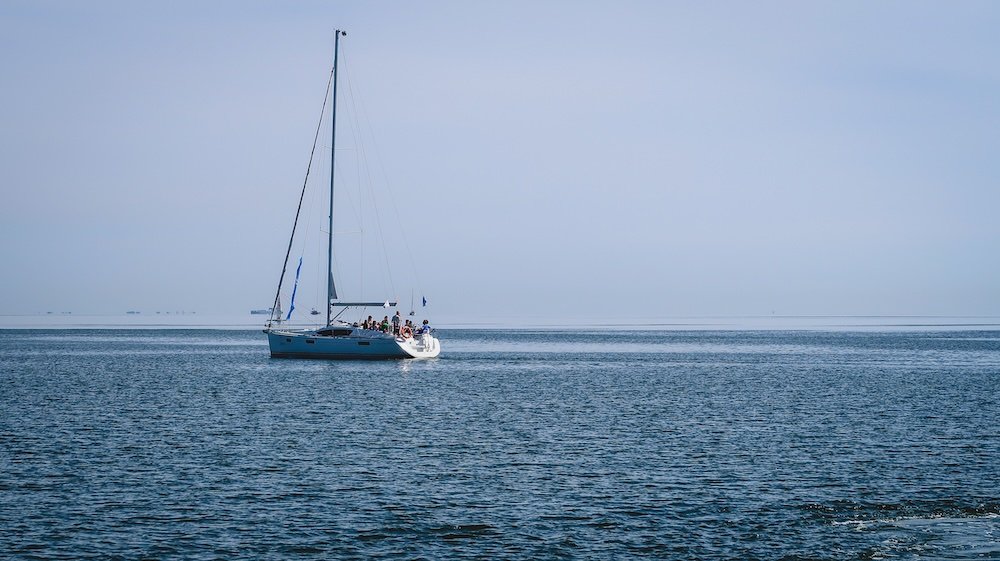
Sopot might be a compact resort town. But it’s brimming with life. Its iconic pier, bustling Monte Cassino street, and easy links to Gdańsk and Gdynia make it a dynamic base for exploring Poland’s northern coast. Up next, we’ll delve into the Top 10 Things To Do—ranging from laid-back beach activities to fascinating cultural corners. After that, we’ll talk about local eats, guided tours, places to stay, day-trip suggestions, tips on moving around, and final thoughts for a memorable seaside escape. Let’s unveil Sopot’s sandy charm.
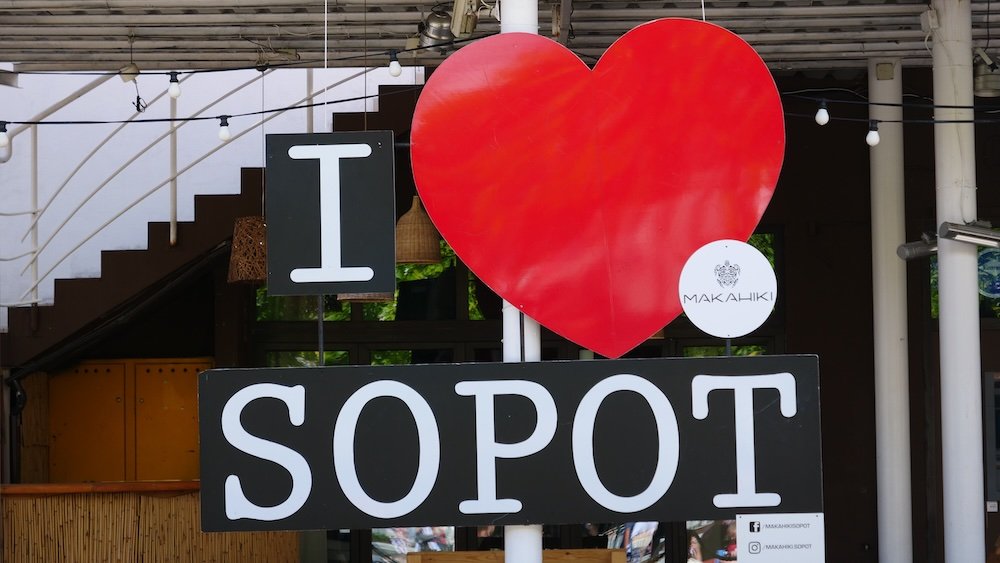
Top 10 Things To Do in Sopot, Poland For Visitors
Sopot boasts a broad range of attractions, from its famed pier and vibrant nightlife to hidden gardens and architectural curiosities. Below are ten highlights. Dive in and shape your Sopot itinerary.
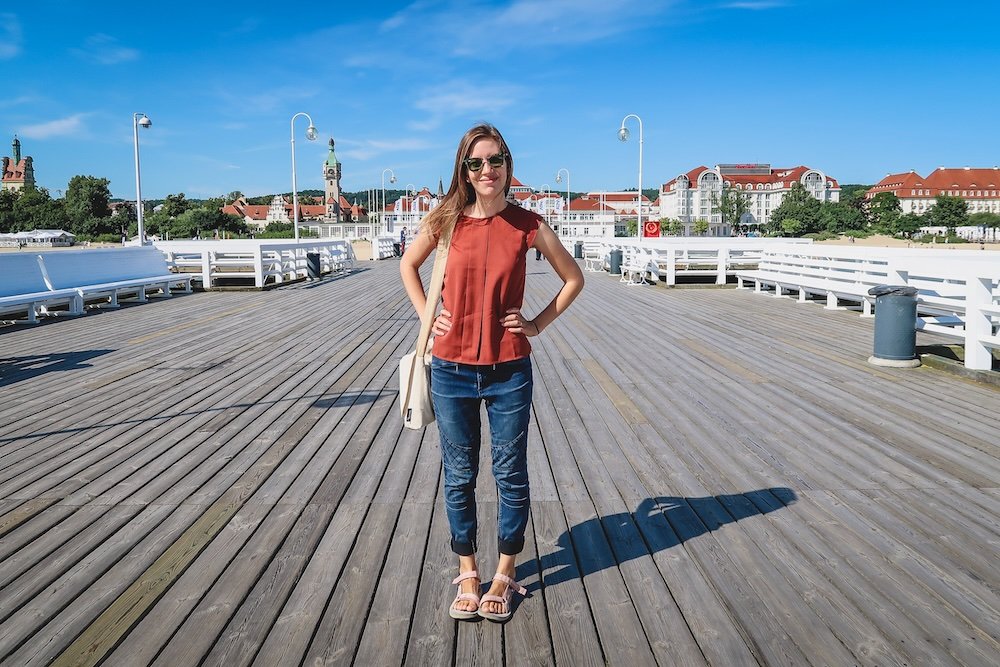
1) Stroll the Iconic Sopot Pier (Molo)
The Sopot Pier (Molo) stretches proudly into the Baltic Sea, claiming the title of Europe’s longest wooden pier. Its wooden planks creak underfoot as seagulls swirl overhead, adding to a rhythmic soundtrack of waves and distant laughter. On calm days, the horizon showcases sailboats bobbing gently, while bright sunshine makes the water shimmer like a turquoise gem. Vendors dot the entrance, selling snacks or souvenirs, yet the real draw is the refreshing sea breeze and panoramic coastal views. Couples meander hand-in-hand, kids race across boards, and photographers angle for that perfect shot of the Polish coastline. Whether early morning or evening, the pier exudes a nostalgic, seaside charm that’s impossible to resist.
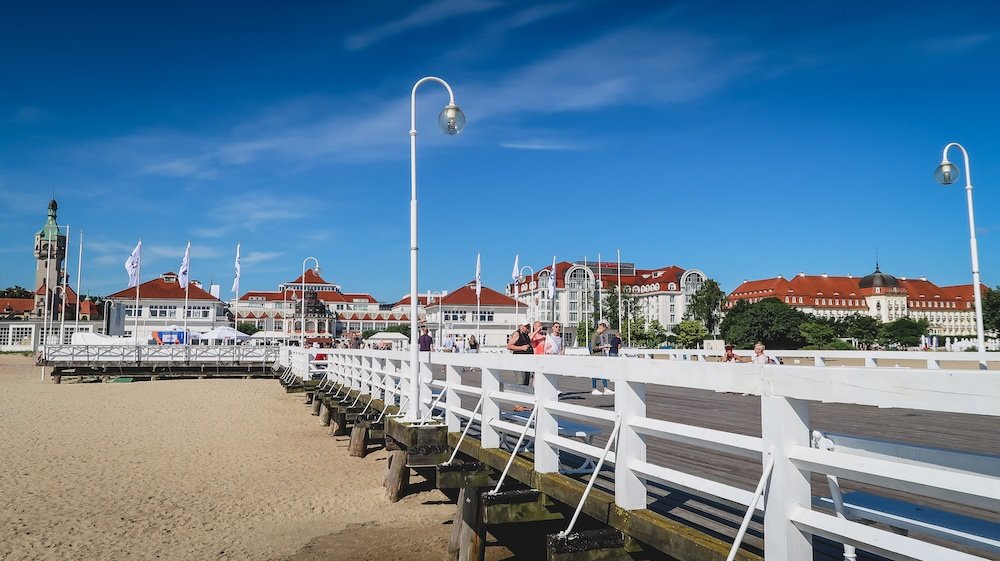
- Entrance Fee: During high season, a small fee may apply (often waived off-season).
- Activities: Simple walks, boat tours, or quiet reflection at the pier’s end.
- Season: Summer is lively; autumn often quieter but still gorgeous.
Tip: Visit at sunset—the pastel skies and glimmering waters make the pier extra photogenic.
2) Explore Monte Cassino (Bohaterów Monte Cassino) Street
Monte Cassino Street is Sopot’s buzzing promenade, brimming with cafés, shops, and street performers. Start at the iconic “Krzywy Domek” (Crooked House), a whimsical building that looks like it wandered out of a fairy tale. Continue strolling past art galleries, gelato stands, and lively bars where local music or DJs fill the air. Bright umbrellas shade sidewalk tables, urging you to pause for a cappuccino or a cold Polish beer. Weekend evenings can get boisterous, especially if you venture near clubs or late-night lounges. Yet by day, the vibe feels more laid-back, perfect for people-watching and sampling local pastries.
- Architecture: Mix of modern designs (like the Crooked House) and older, classic buildings.
- Shops: Souvenirs, boutique clothing, or local crafts for unique mementos.
- Atmosphere: Transforms after dark—families vacate, party-goers arrive.
Tip: Pop into side alleys—some hidden gems, like a quiet café or mural, await off the main drag.
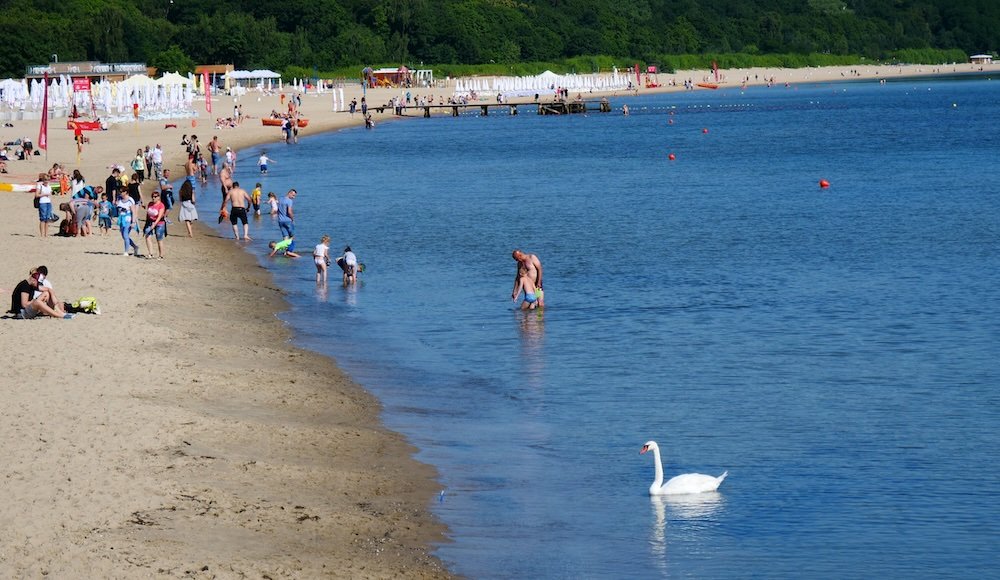
3) Relax on Sopot Beach
Sopot Beach runs alongside the pier, boasting soft sands and gentle Baltic waves. On hot summer days, families sprawl under bright umbrellas, kids squealing as they jump in the shallows. Water temperatures might be brisk, but a refreshing dip can be just the ticket after sunbathing. Stroll barefoot at low tide, collecting seashells or snapping pictures of gulls perched along the shoreline. Beach volleyball nets pop up for impromptu matches, while some corners offer lounge chair rentals if you prefer comfort. Whether you swim, sunbathe, or simply breathe in that salty breeze, Sopot Beach exemplifies easygoing coastal life.
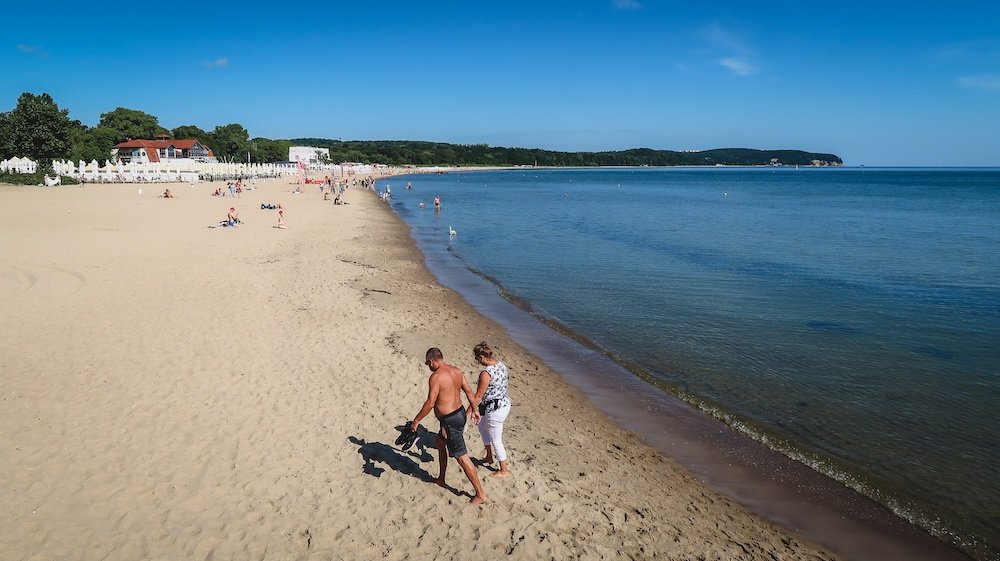
- Best Times: Mornings for fewer crowds, late afternoons for golden light.
- Facilities: Changing cabins, occasional snack stands, and beach bars in peak season.
- Family-Friendly: Shallow edges let young kids paddle safely.
Tip: Bring a windbreaker—the Baltic’s breezes can kick up unpredictably, especially come afternoon.
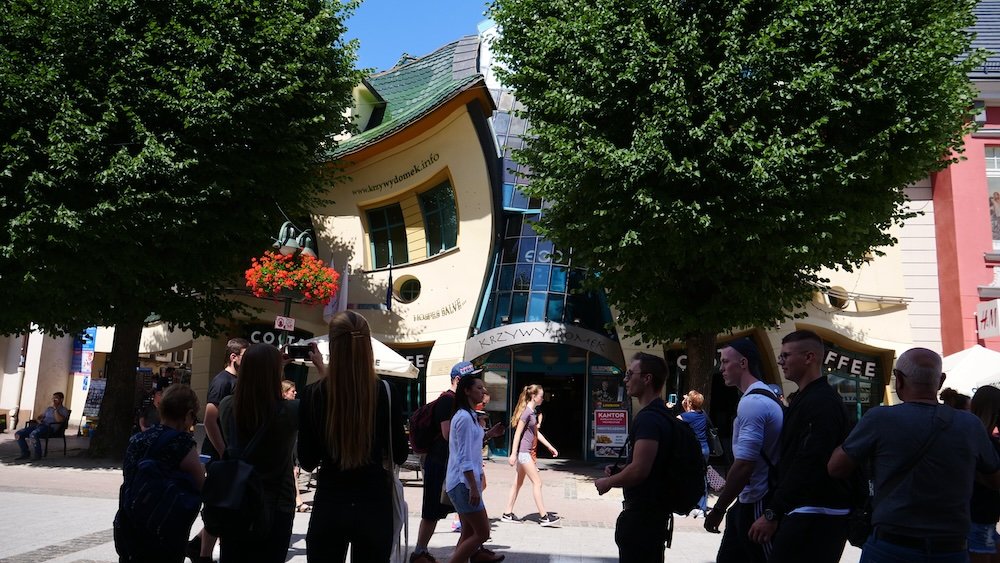
4) Step into the Crooked House (Krzywy Domek)
The Crooked House along Monte Cassino Street is both an architectural oddity and a fun photo op. Its warped facade, with undulating lines and skewed windows, seems like a building caught in a surreal painting. Inside, you’ll find shops, cafés, and sometimes small events that accentuate its playful design. Tourists hover outside, snapping pictures against the cartoonish exterior, while curious passersby wander in. The interior feels slightly more conventional—though the swirling lines continue overhead, adding a whimsical flair. Ultimately, it’s a quick yet memorable pit stop, proving that Sopot’s cityscape can be as creative as it is historical.
- Shops Inside: Mostly boutique stores or snack spots—varies by season.
- Crowds: Peak midday sees throngs posing for selfies; come earlier for clearer angles.
- Design: Inspired by fairy-tale illustrations, the building is a modern hallmark of Sopot’s flair.
Tip: Head up to the second floor—some vantage might let you see the street from a “crooked” vantage.
5) Climb the Lighthouse at Plac Zdrojowy
Although overshadowed by the pier hype, Sopot’s Lighthouse at Plac Zdrojowy deserves a spot on your itinerary. The spiral staircase inside leads to a modest observation deck with sweeping glimpses of the Baltic and the city’s rooftops. Each step reveals vintage maritime memorabilia or tidbits on the town’s coastal heritage, adding thematic charm. From the top, you’ll spot the iconic pier stretching into the waves, plus the hustle of Monte Cassino below. Breezes at that height can be brisk, so hold on to your hat or camera strap. Completing the climb feels mildly triumphant—a literal highlight to your day of exploration.
- Entrance Fee: Small charge, usually worth it for the vantage alone.
- Height: Not massive, but vantage more than compensates with 360-degree views.
- Tip: Ask about opening times—occasionally limited hours in off-peak months.
Tip: Try midday—the light is bright enough for vivid photos, and lines typically remain short.
6) Visit the Sopot Museum (Muzeum Sopotu)
For a cultural detour, step into the Sopot Museum, housed in a beautiful early 20th-century villa near the beach. The exhibits chronicle Sopot’s evolution from a quiet fishing village to a fashionable spa resort. Artifacts, photos, and personal stories bring the town’s Belle Époque heyday to life—elegant bathhouses, lavish balls, and aristocratic visits. The museum also spotlights modern transformations, exploring how war, reconstruction, and tourism shaped Sopot’s identity. Strolling through period rooms, you’ll imagine the breezy days when wealthy Europeans flocked here for healing waters and social gatherings. A tranquil garden out back invites a reflective pause before you exit.
- Language: Displays sometimes in Polish and English, or audio guides if offered.
- Duration: ~1 hour for a thorough look, though you could breeze through in less.
- Cafe: Some seasons see a small café kiosk in or near the museum’s garden.
Tip: Inquire about temporary exhibits—the museum often hosts rotating art or photography displays.
7) Indulge in Sopot’s Nightlife by the Pier
When dusk settles, Sopot’s nightlife pivots from relaxed to vibrant—especially near the pier area. Bars and clubs line the adjacent streets, offering everything from chilled cocktails by the beach to pulsating dance floors with local DJs. Summer weekends can get lively, with bachelorette parties, beach bar pop-ups, and street performers fueling the energy. Even if you’re not a hardcore clubber, sipping a local brew under festoon lights might be your perfect nightcap. Dress codes vary—some clubs prefer a smarter look, while beach bars remain casual. Whether you stay out until the wee hours or just sample an evening vibe, nightlife here blends carefree seaside charm with a dash of urban excitement.
- Safety: Generally safe, but watch belongings, especially in crowded spots.
- Timing: Bars start filling around 9–10 PM; clubs peak after midnight.
- Tip: Some clubs charge an entry fee—carry small cash or confirm if your group is on any guest list.
Tip: Check local events—Sopot sometimes hosts music festivals or open-air concerts that can elevate your night out.
8) Day at Aquapark Sopot
For families or water park aficionados, the Aquapark Sopot is a playful respite. Indoor and outdoor pools beckon year-round, with slides tailored for different thrill levels. Kids love the twisting flumes and splash zones, while adults might unwind in heated pools or swirling jacuzzis. There’s often a spa area, featuring saunas or massage services if you want a calmer experience. Snack bars keep hunger at bay, serving quick bites or drinks. When beach weather is iffy or you’re just craving aquatic fun, this park covers the bases.
- Lockers: Typically included or available for a small deposit—bring your own towel.
- Peak Times: Afternoons and weekends fill with families; consider a morning arrival for shorter slide queues.
- Tip: If you’re into sauna culture, check which sections are mixed-gender or textile-free.
Tip: Ask about family packages—sometimes discounted rates apply for 2+ visitors or combined spa passes.
9) Check Out the Forest Opera (Opera Leśna)
Nestled amid Sopot’s lush greenery is the Forest Opera—a unique amphitheater carved into woodland slopes. Known for open-air concerts, theatrical performances, and festivals, it merges nature’s serenity with cultural vibrancy. Even if there’s no event scheduled, peeking at its stage and seating area is intriguing. When a show’s on, the atmosphere buzzes: from classical recitals to pop gigs, the acoustics resonate among the towering pines. Attendees often arrive early to stroll the forest paths, grabbing refreshments from stands sprinkled around the venue. It’s a chance to combine scenic greenery, fresh air, and creative expression in one memorable outing.
- Event Variety: Opera, pop concerts, kids’ shows—check local listings for your preferred genre.
- Seating: Tiered stands ensure decent views, though premium seats can go fast for popular acts.
- Tip: Bring a light jacket—forest nights can get chilly even in summer.
Tip: Buy tickets online in advance if you’re eyeing a major performance—Forest Opera events often sell out.
10) Ride the Coastal Bicycle Path to Gdańsk or Gdynia
A scenic coastal bicycle path links Sopot with neighboring Gdańsk and Gdynia, offering a breezy ride along the Baltic shore. Rent a bike from local shops—some near Monte Cassino or the pier—and set off on a clearly marked route that skirts beaches, parks, and seaside cafes. The path is mostly flat, making it suitable for novices or families. You’ll pass through pockets of woodland and occasionally veer into bustling seaside promenades, glimpsing the Tri-City synergy. If you tire, you can pause for an ice cream break, snap seascape photos, or even lock up your bike and dip your toes in the water. Upon reaching Gdańsk or Gdynia, explore briefly before circling back or hopping a train home.
- Distance: ~10 km to Gdańsk or 8 km to Gdynia, depending on your route.
- Gear: Helmets recommended; local shops sometimes provide them upon request.
- Tip: Morning rides are quieter, while afternoons see more foot and bike traffic.
Tip: Carry a small backpack—pack water, a light snack, and maybe a towel if you plan a quick beach dip.
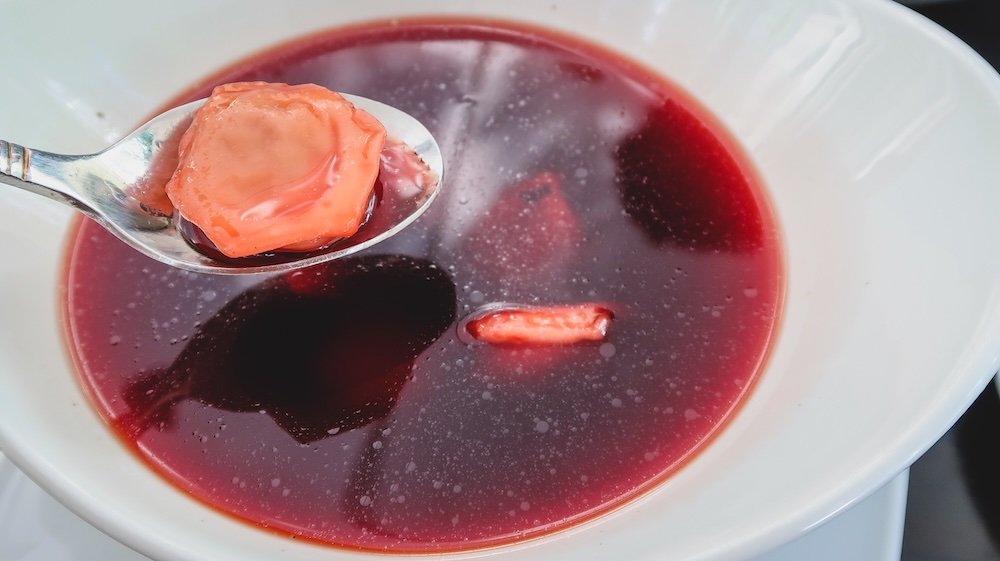
What To Eat and Drink in Sopot, Poland
Sopot’s cuisine thrives on Baltic influences, local produce, and a dash of contemporary creativity. Between beach strolls and cultural jaunts, you’ll find a spectrum of fresh seafood, hearty Polish staples, and sweet treats. Here’s the lowdown on local things to eat for your taste buds.
Seafood & Baltic Favorites
Since Sopot hugs the Baltic Sea, it’s no surprise that fish dishes rule the menus. Herring—marinated, salted, or in cream sauce—appears as a classic appetizer or quick snack. Cod or salmon might show up grilled, fried, or stewed, often paired with simple sides like potatoes and dill. Local fish soups, infused with herbs and vegetables, provide hearty comfort after a windy pier walk. If you’re adventurous, try some smoked eel or sprats—the flavors can be briny yet deeply satisfying. Freshness is key; many restaurants source directly from local fisherfolk, ensuring each bite truly tastes of the sea.
Tip: Ask about daily catches—some eateries highlight a “fish of the day” based on morning market availability.

Polish Classics
Alongside seafood, Polish classics anchor Sopot’s culinary scene. Pierogi—delicate dumplings stuffed with potatoes, cheese, meats, or mushrooms—reign supreme. Bigos (a hearty sauerkraut stew with chunks of sausage) warms you inside out, especially if coastal breezes bring a chill. Don’t overlook Kaszanka (blood sausage) or Gołąbki (cabbage rolls), each showcasing old-world warmth. These dishes often come with sides of pickled veggies or fresh salads. Even in a bustling beach resort, the homestyle charm of Polish staples remains front and center.
Tip: Opt for half portions if you’d like to sample multiple Polish classics at once.
Sweet Treats & Desserts
Sopot also indulges sweet cravings. Pączki (Polish doughnuts) with jam or cream fillings vanish fast from bakery counters, especially on weekends. Sernik (cheesecake), often featuring a slightly tangy twist, is a café staple. You’ll also find local variations of apple pie or szarlotka, best served warm with a dollop of whipped cream. Stroll along Monte Cassino, and you might see stands peddling waffle cones or cotton candy, ideal for a quick sugar rush. These desserts play well with a cappuccino or a shot of spiced vodka, depending on your mood.
Tip: Visit patisseries early—prime pastry picks can sell out by midday in tourist-heavy seasons.
Local Beverages
- Beer: Polish lagers (like Tyskie, Żywiec) or craft brews from rising microbreweries often appear.
- Vodka: Poland’s pride, available in myriad flavors—try Żubrówka (bison grass) for a unique herbal note.
- Compote: A non-alcoholic fruit beverage, often homemade with seasonal fruits, sweet yet refreshing.
Tip: Sipping a shot of chilled vodka after a heavy meal is a Polish tradition that might help your digestion.
Cafés & Beach Bars
Sopot’s café culture is alive, especially along Monte Cassino Street. Sit outdoors with a latte or cappuccino, watch passersby, and nibble on a sweet pastry. By the shore, you’ll find beach bars in summer, serving cocktails, mocktails, or ice-cold beer with direct sea views. The vibe can range from mellow lounge chairs to energetic party hubs with DJ sets. Either way, sipping something cool while your toes dig in the sand is a key Sopot ritual.
Tip: Check happy-hour deals in beach bars—some offer discounted drinks or meal combos to lure the sunset crowd.
Seasonal & Fresh Market Eats
If you’re around on market days, local stalls might display orchard-fresh berries, honey from nearby fields, and homemade cheeses. Street-food stands occasionally appear, flipping Zapiekanka (baguette pizzas) or sizzling sausages. Summer months see a bounty of produce—tomatoes, cucumbers, or herbs that find their way into salads or pickles. This farm-to-table vibe is subtle but present, reflecting Poland’s agricultural backbone. Even fancy restaurants incorporate local, seasonal elements into their specials, ensuring authenticity on each plate.
Tip: Sample market pickles—Polish ogórki kiszone are tangy, crisp, and addictive.
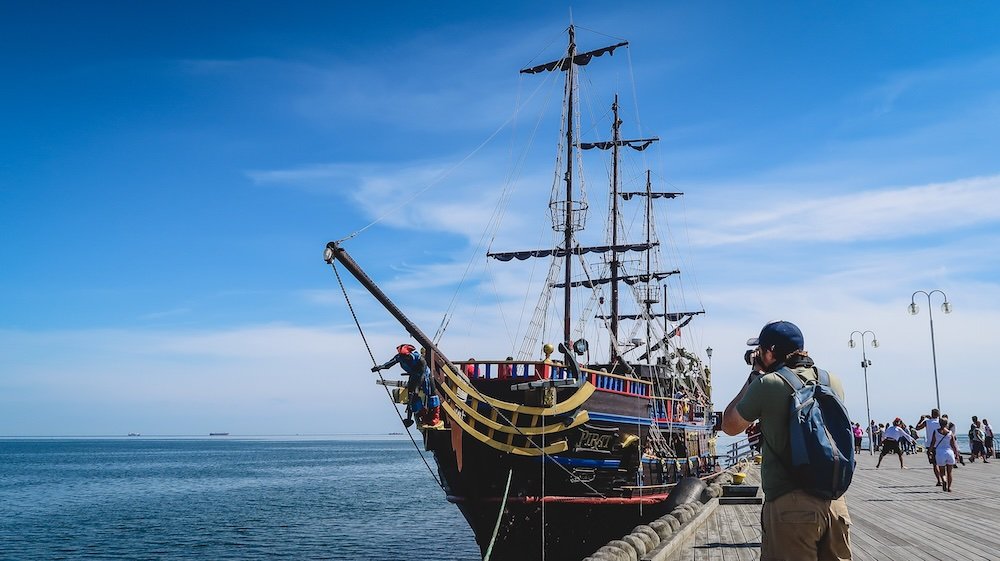
Tours For Visitors To Sopot, Poland
While Sopot can be easily explored solo, guided tours can enhance your immersion—be it historical tidbits, hidden vantage spots, or gastronomic delights. Below are suggested things to do with a local guide, ensuring you won’t miss Sopot’s deeper layers or local treasures.
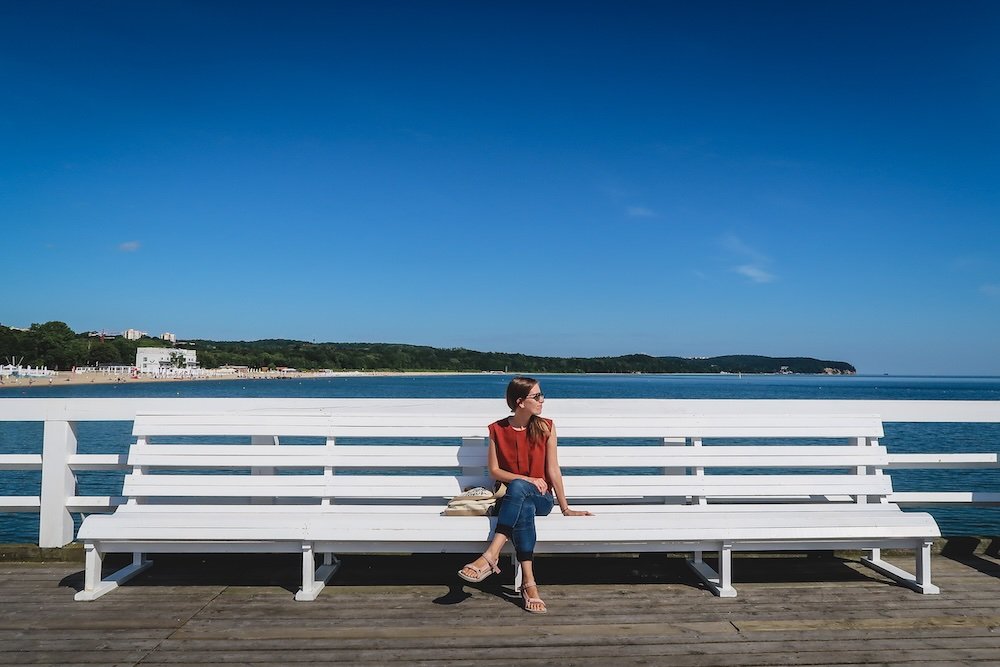
1) Sopot Walking Tour
A walking tour typically begins near the Sopot pier or Monte Cassino Street, leading you through the town’s iconic corners. Guides share history: from Sopot’s 19th-century spa boom to its post-war revival, weaving in anecdotes about famous visitors. You’ll pass Art Nouveau villas, learn about the “Krzywy Domek” (Crooked House), and maybe pop into a hidden courtyard for a quick coffee or local pastry. Some tours incorporate a brief talk on Polish culture, introducing traditions or language tips. If time allows, you might end at the Sopot Museum, gleaning extra context on the region’s transformation. It’s a well-rounded introduction if you crave backstories that bring each street to life.
- Duration: 1-2 hours, comfortable for short visits.
- Languages: English is common, though operators also offer German, Russian, or other languages.
- Tip: Some guides carry old photos to illustrate how Sopot looked decades or even centuries ago.
Tip: Check free or tip-based tours—some local enthusiasts run donation-only walks that can be surprisingly thorough.
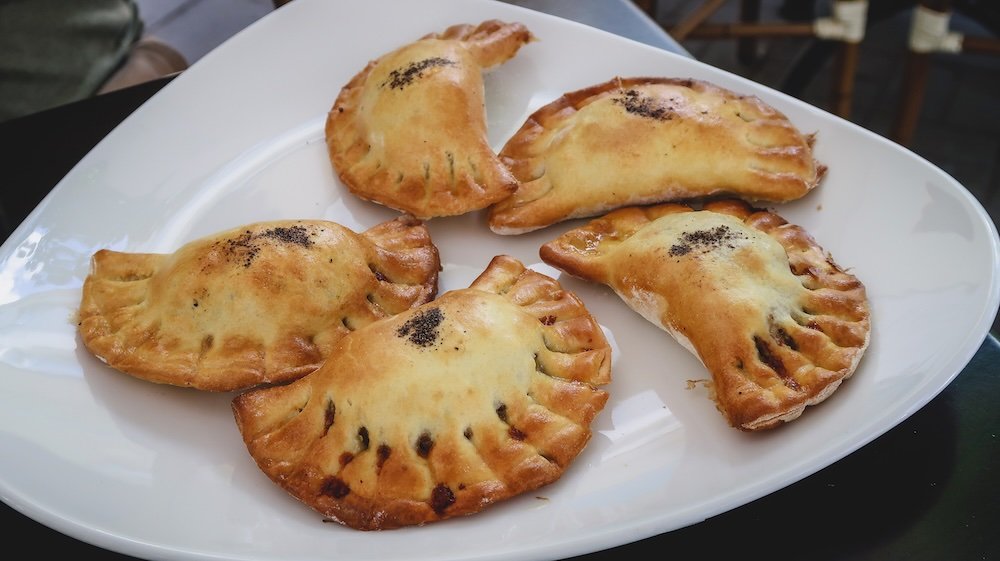
2) Culinary & Craft Beer Tour
If your heart belongs to food and drink, sign up for a Sopot culinary tour that often merges restaurant tastings with local beer samples. You’ll meander from a fish bistro near the pier to a Polish dumpling joint, culminating with dessert at a tucked-away café. Guides share the story behind each dish: how it’s made, which spices define Polish palates, and possibly how the Baltic influences everything from bread to fish. Some tours pop into small breweries or pubs, letting you sample craft beers or ciders rarely found elsewhere. By the end, your taste buds will have soared across the best regional flavors, minus the guesswork of choosing random eateries.
- Booking: Typically via local tour agencies or specialized “foodie tours” in Tri-City.
- Customization: If you’re vegetarian or gluten-free, let them know—most tours adapt with advanced notice.
- Tip: Because you hop multiple stops, come hungry—portion sizes can add up quickly.
Tip: Wear comfy shoes—though the route is short, you’ll be on your feet between bites.
3) Beach & Water Sports Adventure
Summertime calls for beach and water sports tours. Some operators offer half-day excursions, combining stand-up paddleboarding with a scenic kayak loop around the pier. You’ll learn technique basics before gliding over calm (or sometimes breezy) Baltic waters. Guides might point out interesting tidbits—like historical breakwaters or spots where local fishermen dock. If you’re lucky, a sandbank might appear for a quick rest and seascape photos. It’s a refreshing perspective: seeing Sopot’s coastline from the waves, rather than the usual vantage from land.
- Difficulty: Generally beginner-friendly, though moderate fitness helps.
- Gear: Provided—boards, paddles, life vests; bring swim attire and a towel.
- Tip: Some tours offer sunrise or sunset paddle sessions, capturing dreamy coastal hues.
Tip: Apply sunscreen—even cloudy Baltic skies can deliver sunburn if you’re out for hours.
4) Tri-City Bike Tour
Sopot is one point in Poland’s Tri-City combo (Gdańsk, Sopot, Gdynia), and a bike tour bridging them reveals each city’s character. Depart from Sopot, follow a coastal path or designated trails, and pause at scenic spots or hidden neighborhoods. You might stop by Orłowo’s cliffs, Gdańsk’s old port lanes, or lesser-known markets brimming with local produce. Guides handle route planning and ensure a leisurely pace—ideal for families or moderate cyclists. By day’s end, you’ll appreciate how these three cities harmonize and contrast, each with unique architecture, vibes, and cultural flavor.
- Group Size: Typically small, often 8-12 participants max.
- Equipment: Bike, helmet included; e-bikes may be an option.
- Tip: Some tours end near a pier or café so you can unwind post-ride.
Tip: Request a basket or small pannier if you plan to buy souvenirs at any stop.
5) Evening Pub Crawl
For those who love nightlife, an evening pub crawl showcases Sopot’s bars and clubs in a guided, sociable format. You’ll meet fellow travelers at a designated start, usually near the pier or Monte Cassino. Guides lead you to local watering holes, from chill pubs to lively dance spots, often with free shots or discounted drinks included. Expect icebreaker games, a chance to chat with new friends, and glimpses of local party scenes. Many crawls conclude around midnight, leaving you free to keep dancing or call it a night. If you prefer a structured introduction to Sopot’s nocturnal energy, this solves the guesswork of where to go.
- Price: Often covers minimal drinks or deals at each bar; bring extra for any additional orders.
- Dress Code: Sopot can be casual, but certain clubs might require more polished attire.
- Tip: Keep an ID—some bars check ages or have official disclaimers.
Tip: Pace yourself—Polish nightlife can run late, and you’ll want to stay upright for the final stop.
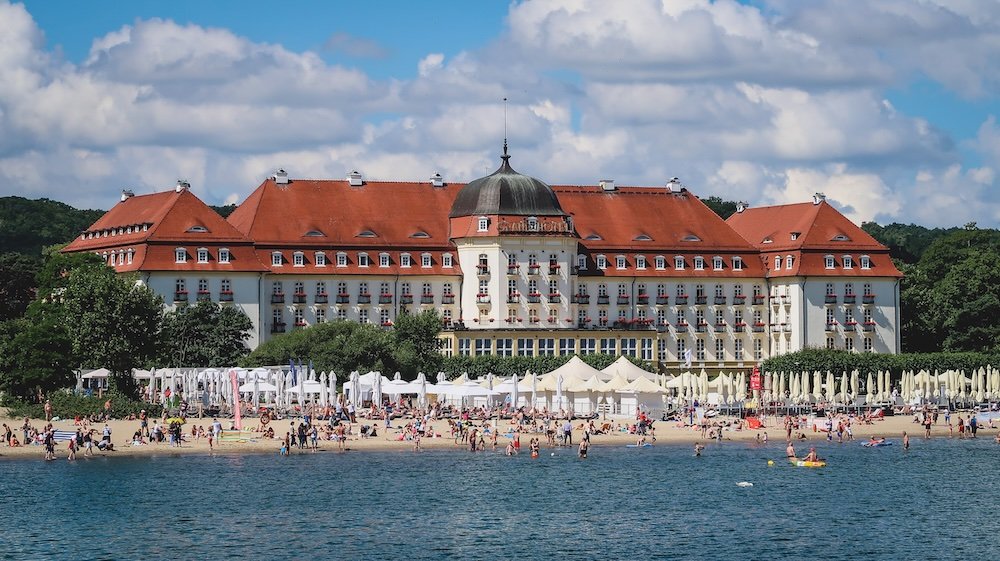
Sopot Accommodations Guide: Hotels, Guesthouses and Hostels
Where you stay in Sopot can shape your entire seaside getaway. The city’s lodging scene spans stylish beachfront hotels, cozy guesthouses in tree-lined streets, and budget-friendly hostels near lively strips. Below are tips and things to do regarding Sopot’s accommodation choices.
Hotels
Sopot’s hotels run the gamut from luxurious spa retreats to mid-range comfort. Grand Hotel Sopot, perched by the beach, exudes old-world glamour—think ornate lobbies, plush suites, and direct Baltic views. Many other beachfront properties boast private lounge areas, some with onsite bars or rooftop terraces for breezy sundowners. Mid-tier hotels near Monte Cassino Street combine modern rooms with quick strolls to restaurants, shops, and nightlife. Expect polished service, optional breakfast buffets (often featuring local pastries and herring), and staff who can arrange tours or day trips. During peak summer, booking early is essential, and be prepared for seasonal price hikes.
- Room Types: From standard doubles to sea-view suites with balconies.
- Facilities: Pools, saunas, or in-house restaurants common in higher-end spots.
- Tip: Some hotels include free pier access or discounts on local attractions, so inquire.
Tip: Look for last-minute offers if traveling off-peak—hotels sometimes slash rates for near-term vacancies.
Guesthouses & Pensions
For a homier vibe, guesthouses (pensions) scatter throughout Sopot’s quieter neighborhoods. Often family-run, they blend personal attention with more budget-friendly pricing than luxury hotels. Interiors can be quaint—think floral curtains, wooden floors, a communal lounge for tea or coffee. Breakfast might highlight local breads, cheese, and house-made jam, offering a nice taste of Polish hospitality. The owners typically share local tips: hidden beach access, scenic bike routes, or the best coffee around. If you value genuine warmth and don’t need large-scale amenities, a guesthouse can be your perfect match.
- Rates: Typically cheaper than mainstream hotels, around €40–€80 per night, depending on season and room type.
- Atmosphere: Quiet, cozy, maybe with a small garden or terrace for sunbathing.
- Tip: Some guesthouses have bike rentals on-site—handy for exploring coastal paths.
Tip: Request an upper-floor room—you might snag partial sea vistas or rooftop glimpses.
Hostels
Backpackers and budget travelers find hostels near Sopot’s train station or Monte Cassino corridor. Expect dorms or private rooms with shared bathrooms. Hostels typically feature kitchens for communal cooking and lounges for meeting fellow travelers. Summer nights might be rowdy if guests return from clubs, so earplugs help. The upside? A social vibe, cost savings, and easy access to beach or nightlife. If the camaraderie of group-living intrigues you—and you want extra zloty to spend on pier activities—hostels are a prime choice.
- Costs: From €15–€25 per dorm bed, possibly €35–€50 for private rooms.
- Kitchen: Stock up on groceries from local markets for cheap breakfasts or dinners.
- Tip: Some hostels organize pub crawls or group outings, ideal for solo travelers.
Tip: Check reviews for cleanliness and staff helpfulness—hostels vary widely in vibe.
Apartments & Vacation Rentals
For longer stays or a homelike setting, consider an apartment or vacation rental. Many modern flats rest in refurbished townhouses, offering full kitchens, living areas, and multiple bedrooms for families. If traveling in a group, splitting the cost can be budget-savvy. Look for listings specifying proximity to the beach or Monte Cassino, so you’re not stuck too far from the main action. Some rentals even boast balconies or small patios, perfect for morning coffee with Baltic breezes. The trade-off is less direct service—no daily housekeeping or front desk—though privacy and space can make up for it.
- Booking Platforms: Airbnb, Booking, local agencies—thoroughly read reviews to confirm quality.
- Check-In: Often self-check-in with key boxes; confirm instructions ahead.
- Tip: Some owners provide bikes or beach gear as part of the rental, sweetening the deal.
Tip: Ask about parking—Sopot’s peak season can be competitive, so an apartment with a secure spot is gold.
Seasonal Fluctuations
Summer (June–August) is prime time for beach-lovers, and Sopot sees a surge in tourism. Rates climb, availability dips, and nightlife pulses with energy. Off-season deals exist in spring or autumn, with quieter beaches, mild days, and lower lodging costs. Winter has its charm—chilly walks along an empty pier, cozy cafés—but some spots scale back services. Decide if you want that lively, sun-baked atmosphere or prefer calmer vibes with fewer crowds.
- Advanced Booking: For summer, aim 3–6 months ahead if you want prime seafront hotels or apartments.
- Short-Notice: Off-peak visits might net last-minute bargains.
- Tip: If you enjoy festivals, check Sopot’s event calendar to align your trip with cultural highlights.
Tip: Look beyond the main drag—stepping a few blocks inland can reveal hidden lodging gems at friendlier rates.
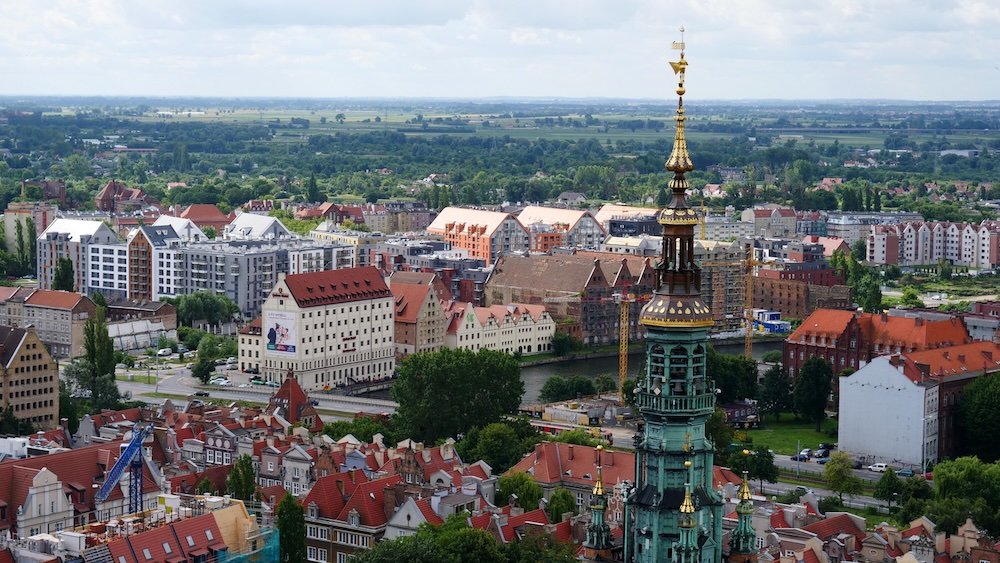
Day Trips From Sopot, Poland
While Sopot offers plenty of things to do, the broader Tri-City region and beyond boasts day-trip options that deepen your Polish coastal adventure. From vibrant Gdańsk streets to serene countryside escapes, these five suggestions ensure each day can brim with fresh discoveries.
Our Travel Video From Gdansk, Poland on Samuel and Audrey YouTube Channel (Nomadic Samuel + That Backpacker)
1) Gdańsk Old Town
A quick 20-minute train ride lands you in Gdańsk, a city replete with medieval spires, Renaissance-inspired facades, and maritime lore. Stroll Długi Targ (Long Market), snapping pictures of the colorful merchant houses and the stately Neptune Fountain. Then explore St. Mary’s Church—one of the largest brick churches worldwide—or pop into the Crane (Żuraw) by the Motława River, once pivotal for loading cargo onto ships. Cafés line the waterfront, perfect for midday cappuccinos or local craft beers. History buffs gravitate to the European Solidarity Centre, spotlighting the city’s pivotal role in modern European democracy. By evening, Gdańsk’s amber shops glow under streetlights—amber being a prized local specialty.
- Transport: Frequent trains from Sopot—look for SKM or Intercity lines.
- Time: Allocate a full day if you want museum visits plus a relaxed lunch.
- Tip: Some travelers combine Gdańsk with Westerplatte or the WWII Museum for a deeper historical lens.
Tip: Arrive early—the Old Town can fill with crowds, especially in peak season around midday.
2) Gdynia for Maritime Flavor
Gdynia, the Tri-City’s modern sibling, lies about 10–15 minutes by train from Sopot. The vibe differs from Gdańsk’s old-world charm—here, sleek architecture and maritime heritage meet. Check the Dar Pomorza (Tall Ship Museum) or the Naval Museum to glean Poland’s naval stories. The waterfront promenade hosts lively food stands and street entertainers, especially on sunny weekends. Gdynia’s cliffs, like Orłowo, yield scenic walks overlooking the Baltic’s waves. If you’re into shopping or a more contemporary cityscape, Gdynia scratches that itch, contrasting Sopot’s resort atmosphere.
- Highlights: Modernist city center, Kościuszki Square, or scenic Orłowo for clifftop strolls.
- Dining: Seafood bistros near the marina or international spots in the downtown core.
- Tip: The Orłowo Pier is smaller than Sopot’s but quieter for introspective sea-gazing.
Tip: Buy a day pass if you plan to bounce between Gdynia, Sopot, and Gdańsk—unlimited SKM train rides ease your movement.
3) Hel Peninsula for Beaches and Seal Encounters
Though it might sound comedic, the Hel Peninsula is a real place: a narrow spit extending into the Baltic, about 60–90 minutes from Sopot via train or ferry. Once there, you’ll find broad beaches, sand dunes, and a laid-back holiday mood. The Seal Sanctuary (Fokarium) draws families, letting you see rescued seals up close. Stroll the charming Hel town center, sample fresh fish from local stands, or rent a bike to traverse the peninsula’s scenic routes. On especially balmy days, the peninsula’s beaches rival any Mediterranean vibe—just be prepared for cooler water temps.
- Transport: Seasonal ferries from Gdańsk or Gdynia can be scenic; trains are year-round.
- Peak Season: Summer weekends see crowds, especially if the weather’s glorious.
- Tip: Wind sports—some sections cater to windsurfers or kitesurfers catching Baltic gusts.
Tip: Bring a light jacket—the wind on Hel can be brisk, even if the sun’s shining bright.
Our Travel Video (Sopot, Poland) on Samuel and Audrey YouTube Channel: That Backpacker & Nomadic Samuel
4) Malbork Castle
A grand fortress, Malbork Castle stands about an hour and a half from Sopot by train, offering an imposing example of medieval brick architecture. Built by the Teutonic Knights, it’s considered one of Europe’s largest castles by land area. Self-guided audio tours or guided groups walk you through corridors, courtyards, and the grand refectory, detailing monastic knight life and political intrigues. The expansive complex includes a museum featuring arms, armor, and relics from bygone eras. Despite its size, you can comfortably explore highlights in half a day. It’s a must for history enthusiasts craving a deep dive into Poland’s storied past.
- Entrance: Multiple ticket tiers—some include main castle plus special exhibits.
- Audio Guides: Available in English and other languages, quite informative.
- Tip: The courtyard café can be pricy; consider packing snacks or grabbing a meal outside.
Tip: Go midweek—weekends see busier crowds and more chance of lines at ticket booths.
5) Łeba & Słowiński National Park (Moving Dunes)
Though a longer haul from Sopot (around 2+ hours), the Słowiński National Park near Łeba rewards you with shifting sand dunes reminiscent of a mini desert. The dunes move several meters yearly, shaped by Baltic winds. Visitors often explore designated paths or rent bikes from Łeba to reach the dunes, passing pine forests and wetlands en route. Climbing the dune peaks treats you to surreal vistas of sand merging into sea, plus breathtaking sunrises or sunsets if you time it right. The region also hosts a calm lakeshore ideal for bird-watching or kayaking. If you crave a day of nature’s odd marvels, this trip is well worth the travel time.
- Transport: Some direct buses or train+bus combos—confirm schedules to avoid being stranded.
- Park Access: A small entry fee may apply, plus watch for protected areas off-limits to footprints.
- Tip: The dunes can be scorching in peak summer—bring water and sunscreen.
Tip: Start early—the dunes are more magical with fewer crowds, and midday heat can be intense.
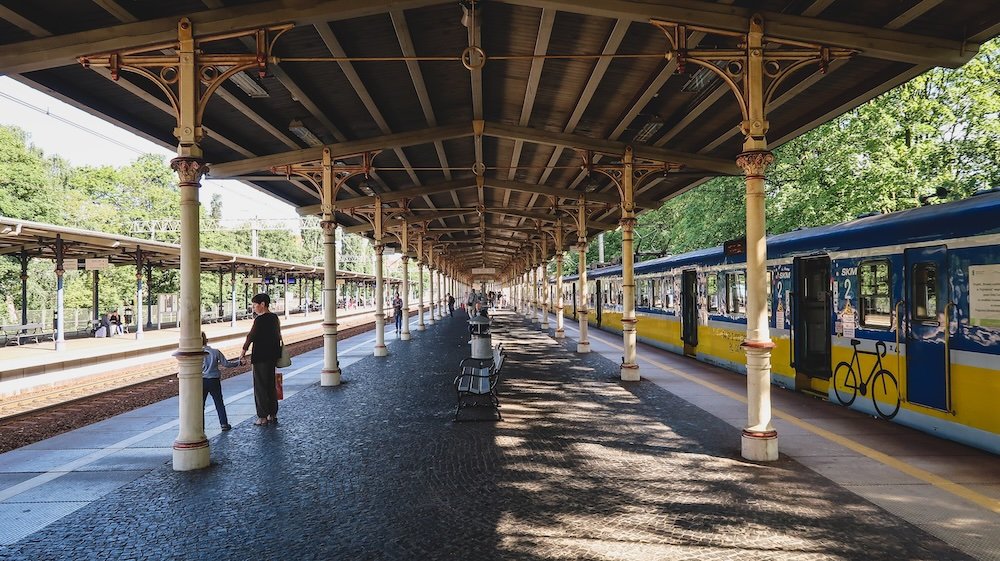
Sopot Transportation Guide
Sopot sits conveniently between Gdańsk and Gdynia, forming part of Poland’s Tri-City. With things to do scattered across beaches, streets, and day-trip spots, you’ll want a solid handle on local transport. Below is how to get around Sopot smoothly.
Trains
Sopot’s main railway station (Sopot Główny) acts as a Tri-City lifeline. SKM commuter trains run frequently between Gdańsk, Sopot, and Gdynia, making beach-hopping or city exploring almost effortless. The ride from Gdańsk to Sopot hovers around 20 minutes, while Gdynia to Sopot is typically 10-15. Long-distance trains also stop here, if you’re venturing further into Poland. Ticket machines or counters at the station handle single rides or day passes. SKM trains can get crowded at rush hours or during big events, but the short distance means it’s rarely unbearable.
- Frequency: Every 10-20 minutes, less frequent late night or off-peak.
- Tip: Keep a few zloty coins—some older machines might not accept cards.
- Platform: Double-check you’re boarding SKM, not an intercity train, to avoid fare confusion.
Tip: Validate tickets in machines near the platform—forgetting can mean a fine if inspectors appear.
Buses & Trolleys
While Sopot lacks extensive trolley lines, standard city buses do fill gaps, especially along certain coastal routes or residential zones. The Tri-City’s ZTM system covers these buses, with routes linking to Gdańsk or Gdynia. Timetables are posted at stops, but you can also track schedules via apps or the official website. Single-ride or time-based tickets are common—just stamp your ticket upon boarding. In summer, some seasonal lines run extra beach stops or vantage points. Buses can be a slower alternative to SKM trains for cross-city travel, yet they might drop you closer to specific attractions or accommodations.
- Fares: Slightly cheaper than trains, sometimes depending on distance zones.
- Night Buses: A few routes exist for post-midnight returns, though frequency is slim.
- Tip: If you plan multiple rides, daily or 72-hour passes can save money.
Tip: Use a local transport app—like “JakDojade”—to navigate schedules in real time.
Walking & Biking
Central Sopot is pleasantly walkable—Monte Cassino Street, the pier, beaches, and many hotels cluster within short strolls of each other. Sidewalks are well-maintained, though watch for occasional cobblestone patches or crowds in peak season. For those who love cycling, a coastal bike path runs between Gdańsk, Sopot, and Gdynia. It’s mostly flat and scenic, hugging beaches and parks. Bike rentals dot the town, letting you ride with minimal fuss. Morning or late afternoons see fewer pedestrians on the path, ensuring smoother cycling.
- Bike Share: The Tri-City “Mevo” system was in flux at times—check if it’s active. Otherwise, private shops rent bikes.
- Lock Up: Use a decent lock—tourist hotspots can attract opportunistic thieves.
- Tip: If you want to cycle the entire Tri-City coast, plan hydration stops—the route can be longer than expected.
Tip: Aim for off-peak times if you’re cycling near the main tourist beach; midday crowds can slow your pace.
Taxis & Ride-Hailing
Taxis in Sopot are readily available around train stations, major hotels, or taxi stands near Monte Cassino. Meters are standard, but confirm the approximate fare or see if a fixed rate applies for certain routes (like airport runs). Uber and other rideshare apps function in the Tri-City area, though availability might dip late at night or in less central spots. If you’re traveling in a group, cabs or rideshares can be cost-effective compared to multiple train tickets. Just keep an eye on surge pricing during big weekend events.
- Card Payments: Many cabs now accept cards, but ask or confirm a driver’s payment method first.
- Night Surcharges: Late-hour rides might carry slightly higher tariff.
- Tip: If your driver’s local, ask for a scenic route if traffic isn’t an issue—they might show hidden corners of Sopot.
Tip: Avoid unmarked taxis—stick to official cabs with company branding and meters.
Driving & Parking
Renting a car in Sopot can facilitate day trips to Hel, Malbork, or beyond. However, within Sopot itself, you might face tight parking near the pier or center during peak season. Street parking often requires payment at meters, with time limits enforced. A few underground garages exist around Monte Cassino, but they fill quickly on summer weekends. If you prefer stress-free wandering, consider leaving the car at your hotel and using SKM or walking for local errands. Also note that local roads can jam up on sunny beach days, so plan accordingly.
- Rental Agencies: Often found in Gdańsk or Sopot’s outskirts—book in advance in summer.
- Traffic: Busy around 10 AM–2 PM when day-trippers arrive, and again at day’s end.
- Tip: Some hotels offer discounted parking or dedicated spots for guests.
Tip: Check your GPS—Sopot’s one-way streets can be confusing for first-time drivers.

Sopot travel questions answered: practical tips, local-style advice & first-time visitor essentials
How many days should I spend in Sopot for a first-time visit?
It depends. If you just want a quick taste of Sopot’s pier, beach, and Monte Cassino Street, one full day and a night can work as a bolt-on to a Gdańsk stay. For a more relaxed seaside break, I’d aim for 2–3 nights so you can enjoy beach time, a side trip to Gdańsk or Gdynia, and at least one evening of Sopot nightlife without rushing around. If you’re planning to add day trips to places like Hel Peninsula or Malbork, stretching to 4–5 nights turns Sopot into a very comfortable Tri-City base.
Is Sopot better as a base than Gdańsk or Gdynia?
Honestly, it depends on your style. Sopot is the classic seaside-resort choice: beach-focused, compact, and social, with easy train connections to both Gdańsk and Gdynia. Gdańsk is the best base if you’re a history buff who wants museums and Old Town vibes right outside your door, and Gdynia leans more local and modern. If beach walks and nightlife are priorities, I’d base in Sopot and use the SKM trains for city day trips; if your focus is sightseeing and WWII/solidarity history, pick Gdańsk and treat Sopot as a seaside escape.
When is the best time of year to visit Sopot for good weather but manageable crowds?
Sweet spot? Late May–June and early September. July and August bring the warmest beach days and the liveliest nightlife, but also the biggest crowds and highest prices. In late spring you often get long daylight hours, milder temperatures, and a more relaxed atmosphere, while early autumn can still be pleasantly warm with sea breezes and cheaper accommodation. Winter can be atmospheric in its own moody Baltic way, but it’s more about brisk walks and cafés than sunbathing, and some seasonal places may reduce hours or close.
Is Sopot expensive compared to the rest of Poland?
Sort of. For Poland, Sopot sits at the pricier end, especially in high summer when it’s a classic Polish beach resort and rates climb. You’ll notice higher hotel prices for seafront properties, and bars around the pier and Monte Cassino can feel closer to Western European prices for cocktails. That said, you can still keep things reasonable by staying a few blocks back from the water, grabbing lunches from bakeries or milk bars, and choosing simple local spots over fully touristy restaurants. Compared to many Western European beach towns, Sopot can still feel like good value.
How do I get from Gdańsk or Gdańsk Airport to Sopot without renting a car?
Easy. From Gdańsk Główny (the main station), frequent SKM commuter trains run to Sopot and usually take around 15–20 minutes. From Gdańsk Lech Wałęsa Airport, you can hop a regional train toward Gdańsk Wrzeszcz or Gdańsk Główny and connect to the SKM line, or use a direct bus or rideshare depending on your arrival time. Tickets are cheap, and you can buy them at machines or kiosks in and around the stations. For most visitors, using trains plus the occasional taxi or rideshare is more than enough—no car needed.
Do I need a car in Sopot and the Tri-City area?
Nope. If your plans focus on Sopot plus Gdańsk, Gdynia, and a couple of easy day trips, public transport and tours will cover almost everything. The SKM trains are quick for bouncing between the three cities, buses fill in gaps, and the coastal bike path is fantastic if you enjoy cycling. A car only becomes attractive if you’re heading deeper into the countryside, visiting more remote coastal pockets, or tackling places like Słowiński National Park at odd hours. For a classic first-time trip, I’d skip the rental stress and rely on trains, buses, bikes, and your feet.
Is Sopot safe, and are there any scams or hassles I should watch out for?
Generally, yes—Sopot feels safe, especially by Central European city standards. The main issues are the usual seaside-resort nuisances: pickpocketing in crowds around the pier and Monte Cassino, and occasionally pushy club promoters or over-priced drinks in certain nightlife spots. Keep an eye on your bag at the beach and in trains, double-check bar menus before ordering fancy cocktails, and be cautious with strangers offering “too good to be true” drink deals. Late at night around busy clubs, use normal city smarts and stick to well-lit streets and official taxis or rideshares.
Is Sopot a good destination for families with kids?
Absolutely. During the day, Sopot feels very family-friendly: shallow sections of beach, pedestrianized areas around Monte Cassino, and extra kid appeal at places like the Aquapark or the seal sanctuary on Hel if you day trip. The nightlife energy ramps up later, but you can easily steer clear of club-heavy corners by staying in quieter neighborhoods or focusing on early dinners and walks along the beach. If you’re traveling with young kids, I’d choose accommodation a short walk from the water but not directly above the noisiest bars and aim for shoulder season to avoid peak-crowd chaos.
What should I pack for Sopot given the Baltic weather?
Layers. Even in July and August, the Baltic Sea loves to remind you who’s boss: breezes can be cool, and evenings may feel chilly after sunset. I’d pack a light windbreaker or shell, a warm sweater or fleece, and long trousers in addition to your usual summer gear. Comfortable walking shoes are essential for cobblestones and pier strolling, plus flip-flops or sandals for the beach. Add a compact umbrella or lightweight rain jacket, because showers can roll in quickly, and don’t forget sunscreen—the combination of wind and cloud can trick you into underestimating the UV.
How crowded does Sopot get in summer, and can I still find quieter spots?
Busy. On hot summer weekends, the main beach near the pier can feel packed with towels, umbrellas, and families staking out territory early in the day. If you want more space, drift further along the beach away from the pier, or aim for early morning and late afternoon sessions rather than midday. The coastal bike path, side streets with charming villas, and nearby Orłowo in Gdynia can all offer calmer vibes when the center is buzzing. Shoulder season (late spring and early autumn) is your friend if you crave fewer people and more relaxed strolling.
Are Sopot’s beaches suitable for swimming, or is the water too cold?
Refreshing is the polite word. In mid-summer, the Baltic can be surprisingly swimmable, especially after a string of warm days, but it rarely reaches the balmy temperatures of the Mediterranean. Many locals and visitors happily swim; others stick to paddling, wading, or just lounging on the sand. If you’re sensitive to cold, pack a quick-dry towel and mentally treat each dip as an invigorating plunge rather than a long soak. For families, the shallow areas near shore are great for kids splashing around on calmer days.
How accessible is Sopot for travelers with limited mobility?
Mixed. The good news: Monte Cassino Street, the pier entrance, and many central areas are relatively flat and walkable, with ramps and wide sidewalks in key spots. The challenges are older buildings without elevators, cobblestones in some streets, and occasional steps or uneven surfaces heading toward the beach or certain viewpoints. When booking accommodation, look specifically for lifts, ground-floor rooms, and accessible bathrooms, as not all historic hotels or guesthouses are fully adapted. It’s worth emailing your hotel in advance to clarify access details, especially if you rely on a wheelchair or have significant mobility concerns.
Is Sopot’s nightlife only for hardcore partiers, or can I enjoy it if I’m more low-key?
Not at all. While Sopot definitely has a reputation for lively clubs and bachelor parties, there’s a wide spectrum of evening experiences. You can grab a sunset drink at a mellow beach bar, settle into a cozy café for dessert and coffee, or enjoy live music without ever stepping foot into a thumping nightclub. If you prefer quieter nights, lean toward places on side streets or further from the pier, and consider shoulder season when the party scene is slightly softer. Nightlife here is what you make of it—you’re not obliged to stay out until sunrise.
Can I combine Sopot with day trips to Hel Peninsula, Malbork, and Słowiński National Park?
Yes, with some planning. Hel Peninsula and Malbork are very realistic day trips using trains or seasonal ferries plus local transport: Hel for beaches and seals, Malbork for the huge Teutonic castle. Słowiński National Park and the shifting dunes near Łeba are also doable as a long day, but they require more travel time and earlier starts. My suggestion is to prioritize one or two bigger side trips rather than trying to smash all of them into a short stay; you’ll enjoy Sopot more if you mix “big days out” with slower beach or café days.
What kind of budget should I plan for a mid-range Sopot trip?
Ballpark, I’d plan for a mid-range traveler to spend roughly €80–€150 per day per person in high season, depending on your accommodation choices and nightlife habits. That could break down as €40–€90 for a decent room (more for seafront hotels), €20–€40 for meals if you mix restaurants with bakery lunches, and the rest for trains, occasional attractions, and drinks. In shoulder season, accommodation costs can drop noticeably, making Sopot friendlier on the wallet. You can go cheaper with hostels and self-catering apartments, or significantly pricier with spa hotels and cocktail-heavy evenings.
Sopot Travel Guide: Conclusion
Sopot might be compact, yet it brims with a blend of beach vibes, cultural flair, and nightlife energy. Its iconic pier lures you outward, letting you saunter above Baltic waves while a gentle breeze ruffles your hair. Meanwhile, Monte Cassino Street hums with café chatter, street art, and late-night revelers who keep the coastal spirit alive well past sundown. In between are pockets of green parks, quaint museums, and friendly locals who beam with pride at their hometown’s status as a go-to Polish seaside retreat.
If you’re searching for things to do, the city more than delivers. Laze on wide-open sand with a good book, or plunge into the brisk sea to jolt your senses. By afternoon, maybe you’ll explore that whimsical Crooked House or climb the local lighthouse for panoramic photo ops. Evenings beckon with a lively bar scene, sipping craft cocktails or a frothy beer while distant music drifts from open doorways. Not a night owl? No worries—Sopot’s also about tranquil dawn walks along the shore or quiet corners in hidden cafés savoring a cappuccino and a slice of fresh cake.
Final Thoughts
Yet Sopot isn’t an isolated bubble. Thanks to efficient trains and roads, you can dart over to Gdańsk for a day of Old Town grandeur or zip off to Gdynia for a modern maritime edge. If you’re enticed by nature, the Hel Peninsula’s beaches or the cinematic dunes near Łeba all lie within reasonable reach. Returning to Sopot feels like coming back to a comforting seaside nest—a place where you can unwind after exhilarating side excursions, letting the lullaby of the sea lull you to sleep.
So pack your swimsuit, your curiosity, and your appetite for local wonders. Once you’ve stepped onto that wooden pier or shared laughs on Monte Cassino, it’s easy to see why so many return—and why Sopot’s name resonates with summertime bliss. The Baltic calls, and Sopot answers.
